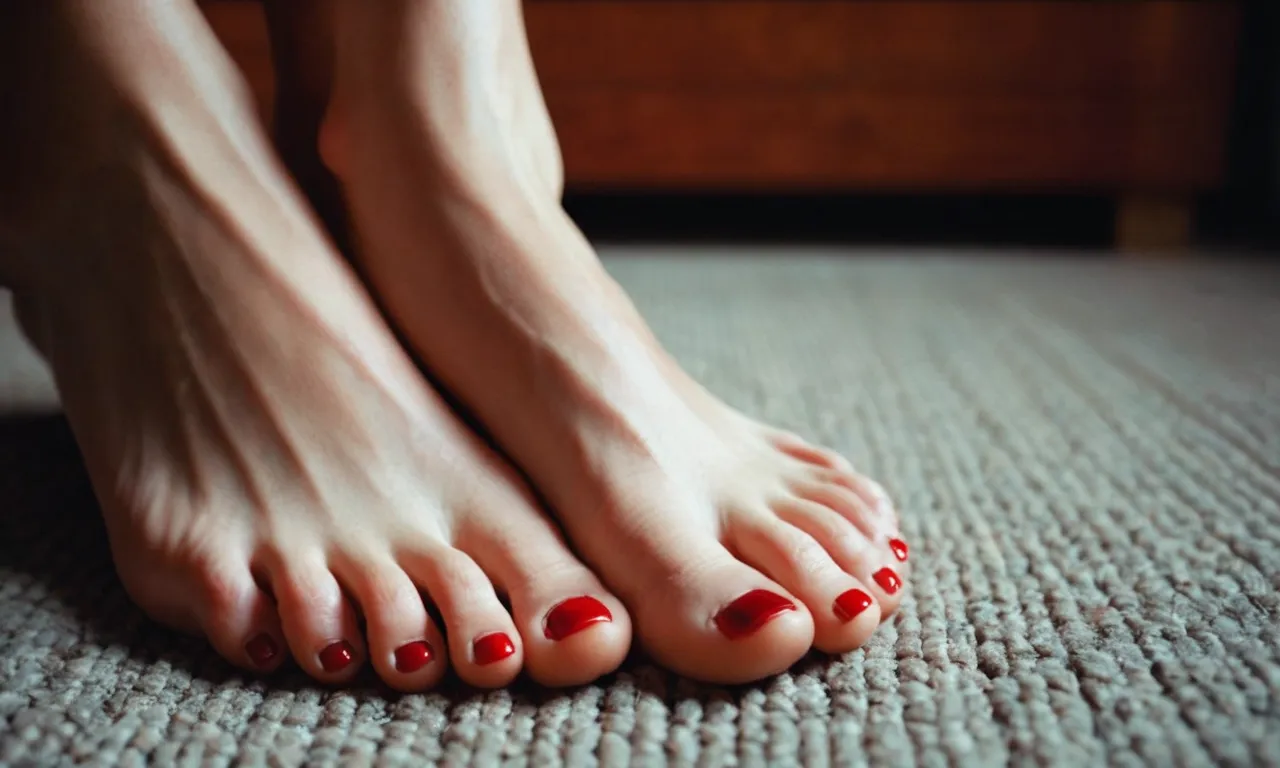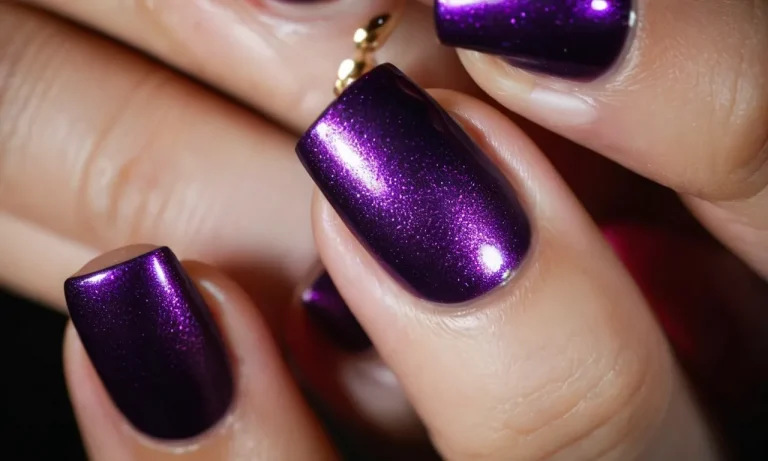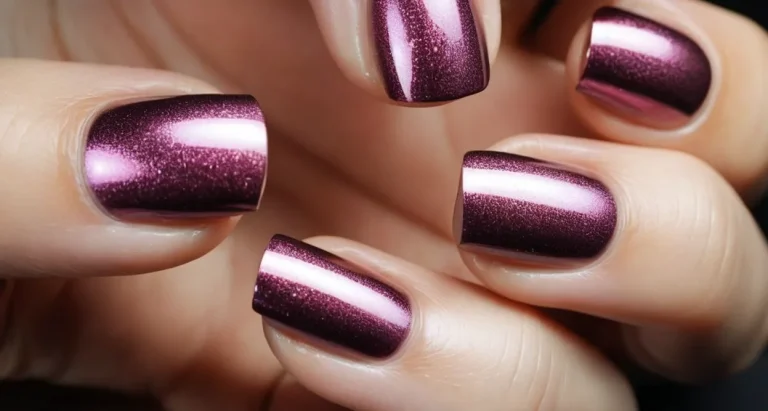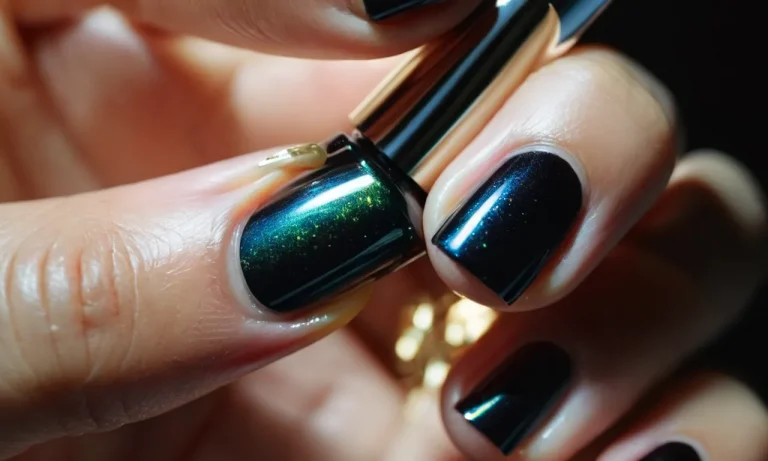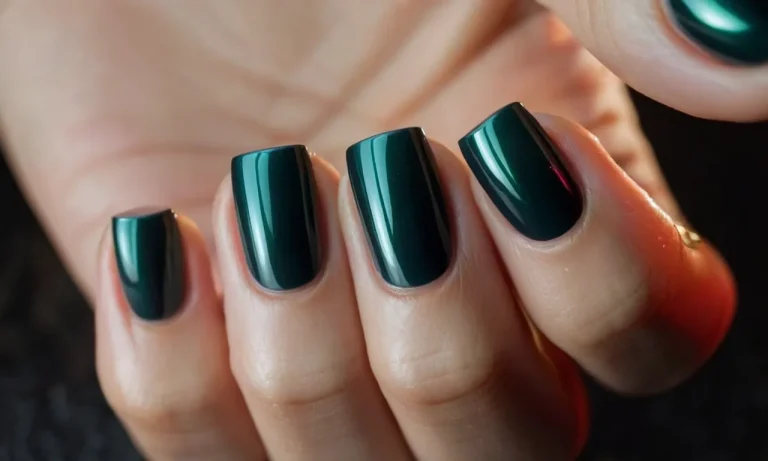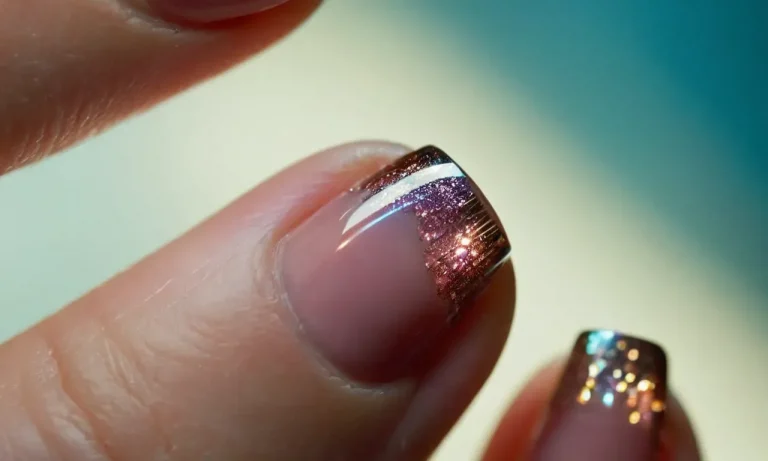What To Do When Your Toenail Falls Off
Losing a toenail can be painful and alarming. If you look down and see your toenail is gone or hanging on by a thread, you’re probably wondering what happened and what you should do next.
If you’re short on time, here’s a quick answer to your question: Clean the area gently, apply an antibiotic ointment, cover with a bandage, and avoid infection. Let the nail grow back on its own.
In this comprehensive guide, we’ll cover everything you need to know about losing a toenail unexpectedly. You’ll learn what causes toenails to fall off, when to see a doctor, how to care for the nail bed properly, remedies to relieve pain and discomfort, and tips to help the nail grow back stronger.
Common Causes of Losing a Toenail
Injury or trauma
One of the most common causes of losing a toenail is injury or trauma to the toe. This can happen from stubbing your toe, dropping something on it, or participating in sports. The impact can cause blood pooling underneath the nail, leading it to fall off.
Runners and hikers are especially prone to losing toenails from the constant pounding on the nails during long distances. If the toenail turns black after an injury, it is likely dead and will soon fall off. Trimming the nail can help relieve pain and pressure as it continues to detach.
Fungal infections
Fungal infections like athlete’s foot can spread to the toenails, causing thickening, discoloration, and distortion of the nail. As the fungus progresses, it can loosen the nail and cause it to fall off. Fungus grows well in the warm, moist environment of shoes and thrives on nails.
Treating fungal infections requires oral medications for up to 12 weeks. Keeping your feet clean and dry is also essential. Soaking your feet in a solution of white vinegar and water can help kill fungus and prevent regrowth.
Psoriasis
Psoriasis is an autoimmune condition that causes a buildup of skin cells. This can affect toenails, causing pitting, irregular nail growth, and detachment from the nail bed. Up to 50 percent of people with psoriasis get it on their nails.
The condition is challenging to treat on nails but can be managed with steroid injections, oral medications, and moisturizers. Keeping nails trimmed short can also prevent snagging and trauma that can worsen nail psoriasis.
Poorly fitting shoes
Shoes that are too tight or too loose can cause toenails to fall off. Wearing shoes that are too tight presses the nail bed, causing damage. Meanwhile, loose shoes cause sliding and friction that rub against the nail. This constant irritation can weaken the nail and detach it from the nail bed.
Wearing properly fitted shoes is essential to prevent toenail loss and other foot problems like corns, calluses, and bunions. A good rule of thumb is to shop for shoes at the end of the day when your feet are swollen to their largest size.
Skin cancer
Although rare, skin cancer like melanoma can affect the toenails. Cancer causes changes to the nail, including discoloration, streaks, grooves, or loosening from the nail bed. If you notice any unusual changes to your toenails, it’s important to see a dermatologist.
Catching melanoma early greatly improves outcomes. Untreated, the cancer can spread quickly. Other warning signs include nail bleeding, an ulcer under the nail, and rapid nail growth. Toenail removal may be necessary to treat cancers that have advanced.
Losing a toenail can be alarming but is rarely a cause for concern. In most cases, the nail will regrow within several months. Proper nail care and well-fitted shoes can help prevent injury and irritation that detach nails.
See a doctor if nail changes do not improve or you suspect a fungal or skin infection. Taking quick action allows you to get back on your feet faster!
Treating and Caring for the Nail Bed
Cleaning the nail bed
It is crucial to keep the exposed nail bed clean to prevent infection while the nail grows back. Gently clean with mild soap and water once a day, patting dry with a clean towel. Avoid submerging the toe in a bath or pool. Using an antiseptic like betadine can help keep the area disinfected.
Applying antibiotic ointment
After cleaning, apply an antibiotic ointment like Neosporin and cover with a bandage. This helps prevent infection and keeps the nail bed moist, which aids healing. Reapply ointment and change bandages daily.
Bandaging the toe
Properly bandaging the toe protects the sensitive nail bed. Use a soft bandage that won’t stick to the wound. Wrap it snugly but not too tight. Change daily and check for signs of infection like redness, swelling, oozing pus, or foul odor.
Over-the-counter pain medication
As the nail grows back over several months, there may be mild to moderate throbbing pain. Over-the-counter medications like acetaminophen or anti-inflammatories can provide relief. See a doctor if pain persists beyond a few days or gets worse.
Soaking in Epsom salt
A warm Epsom salt foot soak promotes healing by increasing blood circulation, reducing inflammation and discomfort. Dissolve 1/2 cup of Epsom salts in a basin of warm water and soak feet 10-15 minutes daily. Rinse and pat dry thoroughly after. This aids the nail regrowth process.
Proper care while the toenail grows back in is vital for healthy regrowth and preventing troublesome complications. Continue cleaning, disinfecting, bandaging and monitoring the nail bed daily. See a podiatrist if excessive pain, drainage or signs of infection develop.
Preventing Future Toenail Loss
Wear properly fitted shoes
Wearing shoes that are too tight or too loose can lead to ingrown toenails and pressure on the toenails, increasing the risk of toenail loss. When trying on new shoes, make sure there is wiggle room for your toes – about a half inch between your longest toe and the end of the shoe.
Avoid pointed toe shoes or high heels that squish your toes together. If you regularly participate in sports, visit a specialty shoe store to get properly fitted for athletic shoes to prevent friction and impact injuries.
Treat nail fungal infections
A fungal infection under or around the nail (onychomycosis) is a common cause of toenail loss. Fungal infections thrive in warm, moist environments like sweaty shoes and locker rooms. Treating toenail fungus as soon as symptoms appear can prevent the infection from worsening and causing nail loosening or detachment.
Over-the-counter antifungal creams, prescription oral medications, and laser treatments can clear up stubborn fungal infections. Keeping your feet clean and dry and wearing breathable socks and shoes can also help prevent fungal growth.
Trim nails properly
Improper nail trimming can damage the nail bed and cause your nail to partially or fully come off. Use sharp nail clippers or scissors designed for thicker toenails. Trim your nails straight across to avoid ingrown toenails. File the edges smooth with an emery board.
Never cut into the corners or trim your nails too short, leaving no white tip. This increases the risk of developing painful hangnails. After a shower when your nails are soft, use an orange stick to gently push back and trim the cuticles, preventing painful tearing.
Protect feet during sports
Intense sports like soccer, football, basketball, and trail running can lead to toenail trauma, bruising, and even complete avulsion or separation from the nail bed. Wear sport-specific shoes with adequate toe protection and padding. Tape or pad your toes to avoid friction blisters and blunt trauma.
Consider light hiking or water shoes when participating in water sports to protect bare feet on rough or sharp surfaces. Take care not to stub your toes when playing sports with fast direction changes like tennis or racquetball.
Moisturize nails and cuticles
Dry, brittle toenails are more prone to cracking and detachment. Apply a nourishing nail and cuticle oil daily, massaging into the nails and cuticles. Petroleum jelly is also an effective moisturizer. Exfoliate with a pumice stone to remove dead skin around the nails.
Avoid excessive manicures and pedicures, as the acetone remover and scraping of cuticles can lead to drying. Biotin supplements or a multi-vitamin containing biotin can also help strengthen weak toenails.
When to See a Doctor About a Lost Toenail
Unrelenting pain
If you are experiencing severe, constant pain after losing a toenail or injuring your toe, it’s important to see a doctor. The pain could be a sign that the nail bed has become infected or that your toe is fractured.
An infection needs treatment with antibiotics and a fracture may need a cast or splint to heal properly. Ignoring unrelenting toe pain could lead to serious complications like tissue damage or bone infection.
Don’t try to just “tough it out” – seek medical care for pain that doesn’t get better with over-the-counter medications and rest.
Signs of infection
Along with pain, be on the lookout for other signs of a nail bed infection like redness, swelling, oozing pus, foul odor, and red streaks spreading from the affected area. Infections require prescription antibiotic treatment.
Left untreated, the infection can spread into your foot and leg, becoming very serious. Diabetics and those with weakened immune systems are at higher risk for complications. See a doctor right away if you notice any infection warning signs after losing a toenail so you can get on antibiotics ASAP.
Diabetes complications
People with diabetes need to take extra care of their feet and be vigilant about toenail injuries. High blood sugar can cause nerve damage and poor circulation which increases infection risk and delays healing.
Losing a toenail or getting a toenail injury may seem trivial but it can quickly escalate into an ulcer or gangrene for diabetics. See your doctor promptly after any toe trauma if you have diabetes. You may need antibiotics, special wound care, or other treatments to prevent complications like amputation.
Complete nail loss
It’s normal for a nail to fall off after a significant crush injury like dropping something heavy on your toe or stubbing it really hard. The nail often turns black and falls off over the next few weeks as a new nail grows in.
But if your entire toenail falls off suddenly without any known injury, see your doctor to determine the cause. This could signal an underlying health condition like thyroid disease, low iron, or malnutrition. Blood tests can check for any deficiencies.
Your doctor may also test for fungal infections which can cause nails to detach.
Cancer concerns
In rare cases, a chronically painful, discolored or misshapen toenail may be a sign of melanoma – the most serious type of skin cancer. See your dermatologist promptly if you have a suspicious looking nail that does not heal. Catching melanoma early is crucial.
Take a photo of the abnormal nail so your doctor can monitor any changes at follow up visits. Annual full body skin checks are recommended for high risk groups like those over 50 or with a family history of melanoma. Be vigilant about monitoring your skin and nails for any irregularities.
Helping the Toenail Grow Back Healthy
Let it grow out naturally
The best thing to do when a toenail falls off is to just let it grow out on its own. Attempting to peel or cut the nail before it’s ready could lead to infection or poor regrowth. Be patient and allow the new nail to fully form underneath the old one and push it off naturally.
This usually takes several months. Keep the nail bed clean and dry during this time.
Use biotin supplements
Biotin is an essential vitamin that aids keratin production. Keratin is a key protein that makes up the nail plate. Taking a daily biotin supplement can help strengthen nails and stimulate faster regrowth. The recommended dose is 2.5mg per day.
Biotin rich foods like eggs, salmon, and avocados can also boost keratin levels.
Try nail strengthening polish
Using a nail hardener or strengthener polish can help reinforce the nail as it grows out. Look for a formula containing hydrolyzed wheat protein or calcium. Apply it regularly according to package directions. This helps protect the delicate new nail and prevent cracking or peeling.
It also hides nail imperfections.
Massage nail bed and cuticles
Gently massaging the nail bed and cuticles will increase blood circulation to the area and promote growth. Use a cuticle oil or moisturizer to massage the nail a few minutes daily. Push back cuticles to encourage the nail to grow out. Proper nail care reduces risk of re-injury.
Continue fungus treatment
If a toenail fell off due to a fungal infection, continue antifungal treatment as prescribed by your doctor. Oral medications or medicated nail polishes will target residual fungus so the new nail can grow in healthy.
Left untreated, the fungus may spread and cause the new nail to become infected too.
Conclusion
Losing a toenail can be startling but it’s rarely a cause for major concern. In most cases, simply keeping the area clean and protected will allow the nail to regrow naturally over several months.
Be sure to avoid sources of trauma to the nail and treat any underlying conditions. See a doctor if pain, drainage or other symptoms persist. With proper care, your toenail should grow back looking healthy and strong.

